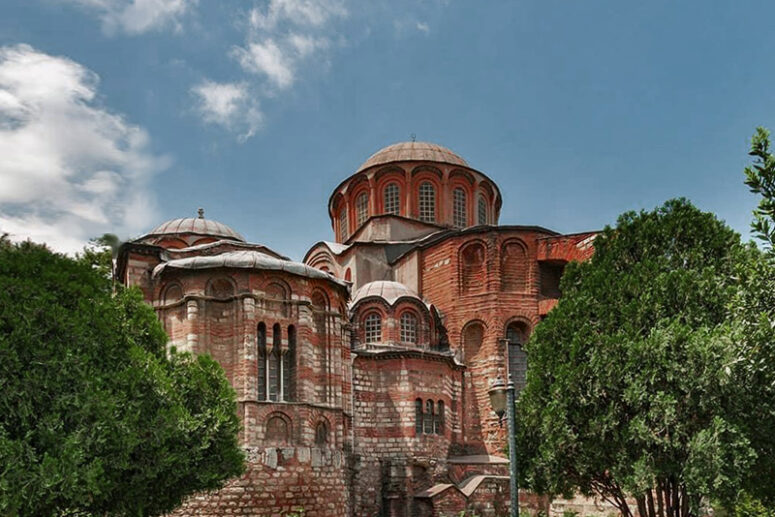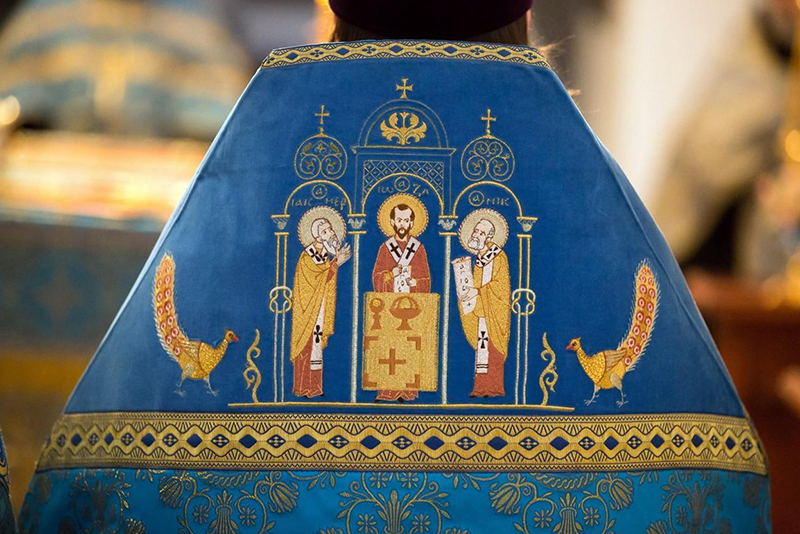
Six months after the conquest of Constantinople by the Turks in 1453, the Chora monastery with the Cathedral of Christ the Savior became the Kariye Camii mosque. The frescoes and mosaics were partly knocked down and partly covered up.
In 1948, the mosque was turned into Kariye Museum, mosaics and frescoes were restored, everyone could see them. At the end of last year, the Supreme Administrative Court of Turkey ruled that the Cabinet of Ministers had no right to turn the Istanbul mosque into a museum. And now the Turkish government officially and finally returned the status of a mosque to the museum. Alexei Lidov, art historian and Byzantologist, says why this museum is important not only for the Christian world and what makes it unique.
Second – after Hagia Sophia

Chora Monastery is one of the main monuments of Byzantine art. In terms of its importance for the Christian world, it ranks second after the Temple of Sophia of Constantinople. The monastery was founded in the 11th century, rebuilt in the 12th century, but received its final modern appearance in 1315-1321.
This unique museum of Byzantine mosaics and frescoes was created at the beginning of the XIV century, in an era named after the ruling imperial dynasty of Paleologos. The customer was the Great Logothete of the Byzantine Empire, Theodore Metochites, the chief adviser to Emperor Andronikos II Palaiologos, in the realities of our world it is like a prime minister. Theodore Metochites, the most educated man of his time, theologian and writer, invited the best masters of Constantinople to decorate the church.
The Cathedral of Christ the Savior of the Chora monastery is rightfully included in the UNESCO list of cultural heritage as one of the most important monuments of Byzantine art.
Defended the honor of the Greek craftsmen
Mosaics and frescoes of the temple were roughly smeared after the capture of Constantinople, when the church became a mosque. When in the 19th century, part of the mosaics and murals of the temple were uncovered from under Turkish plaster, the researchers did not believe that this was done by Greek craftsmen. Then there was a myth about a certain secondary nature of Greek medieval art, and the mosaics were attributed to unknown Italian craftsmen. But everything turned out to be exactly the opposite: it was this Byzantine art that influenced the art of the Italian Proto-Renaissance, for which it was an unattainable crown jewel.
Chora – as the name of God
In guidebooks and even popular science publications, we will find the name of the monastery as of Christ the Savior in Chora, and the explanation that “chora” means the location of the monastery outside the historic city near the new walls and means “in the fields”. However, in my opinion, the name of the temple is by no means connected with the location, but with the dedication of the monastery to Christ Chora, where “chora” is one of the sacred names of the Second Person of the Holy Trinity, meaning “Divine space”. That is, this is the same level of dedication as the dedication of the temple of Hagia Sophia – the Wisdom of God Christ the Logos or the Church of Saint Irene, which is located near Hagia Sophia, which is dedicated to Christ as Peace, and by no means to a famous martyr.
The program of the dedication of the temple, which he rebuilt, decorated, belongs to the same Theodore Metochites, whose portrait we see above the main entrance to the temple – a large composition in which the temple ktetor Theodore Metochites, bowing in deep admiration, brings to the feet of Christ sitting on the throne , a model of the temple he created. The main images of Christ above the entrance to the narthex and to the left of the altar are signed with a rare inscription “Jesus Christ Chora ton zonton (Christ Space of the living)”. “Chora” appears in three more images of the Mother of God with the infant, named “Miter Teu. Chora tu achoritu (Mother of God is the Space of the One who does not fit into space) ”, also located along the central axis of movement towards the altar. Thus, Theodore Metochites gives us a difficult but clear key to understanding the entire iconographic concept and the theological thought behind it.

The best mosaics in the world
The mosaic cycle of the temple is perhaps the finest mosaic works in the world. If you collect all the mosaics of all traditions and eras, then the mosaics of the Chora monastery will claim first place in terms of artistic excellence.
Mosaics are well preserved in two porches – the exonartex (outer open porch) and the inner narthex (porch). The theme of mosaic compositions is the childhood and youth of Christ and the Mother of God.
Most of the mosaics were destroyed
Unfortunately, not very many mosaics have survived in the main space of the temple; almost all of them were knocked down when the temple became a mosque. There remained only three compositions of Christ and the Mother of God with inscriptions on the sides of the altar and on the western wall the perfectly preserved composition “The Dormition of the Mother of God.” We can only imagine how beautiful were the rest of the barbarously destroyed mosaics.

Image of a Byzantine princess who lived at the Mongol court
Among the mosaics – a unique deesis, where there are only two figures – standing Christ and the Mother of God turning to Him with the prayer. This is also a ktetor composition: at the feet of Christ and the Mother of God, there are the historical ktetors of the temple, who supported it before Theodore Metochites began the reconstruction of the temple and its decoration. It depicts a member of the imperial family, Isaac Komnenos, who rebuilt the temple in the 12th century and Maria Despina of Mongolia (13th century) – a Byzantine princess who happened to be at the Mongol court as the wife of one of the khans, and then returned to Constantinople, became a nun, a prominent figure in Byzantine Orthodoxy her era.

The first steps of the Virgin Mary
The temple has preserved a detailed mosaic cycle depicting the childhood of Christ and the Mother of God. Among the compositions: The first steps of the Virgin Mary, the Nativity of Christ, Flight to Egypt, Joseph’s Farewell to Mary (when he wanted to let Her go), Joseph’s Dream. Including the rarest scene depicting the tax census under Herod, which is mentioned in the Gospels.

Waiting for the Second Coming
Of the unique iconographic features, the fully preserved frescoes of the southern side-altar (paraclession), which was intended for the burial of the monastery’s ktetors, including Theodore Metochites, are important. The program of painting is connected with the theme of the Resurrection, the Second Coming, hence the famous fresco “Descent into Hell” in the altar – as an image of the coming resurrection; a detailed composition of the Last Judgment, as well as the image of the great Orthodox hymnographers – John of Damascus, Kosma Mayumsky and others, who, as evangelists, are depicted in the sails of one of the domes of the paraclession: they created their hymns with divine inspiration, glorifying Christ and the Mother of God.
The main scholarly publication on the Chora Monastery has four large volumes, the content of which is impossible to retell here. But the study of this unique ensemble continues in terms of archeology, iconography, and the peculiarities of the style and organization of the sacred space. It is sad to realize that now all these interesting studies, If they even continue, will at least be largely hampered in the new-born mosque, created for no reason.
Tranlsated by The Catalogue of Good Deeds
Source: https://foma.ru/hram-hrista-spasitelja-monastyrja-hora-kahrie-dzhami-okonchatelno-stal-mechetju-pochemu-on-vazhen-dlja-vseh-hristian.html




